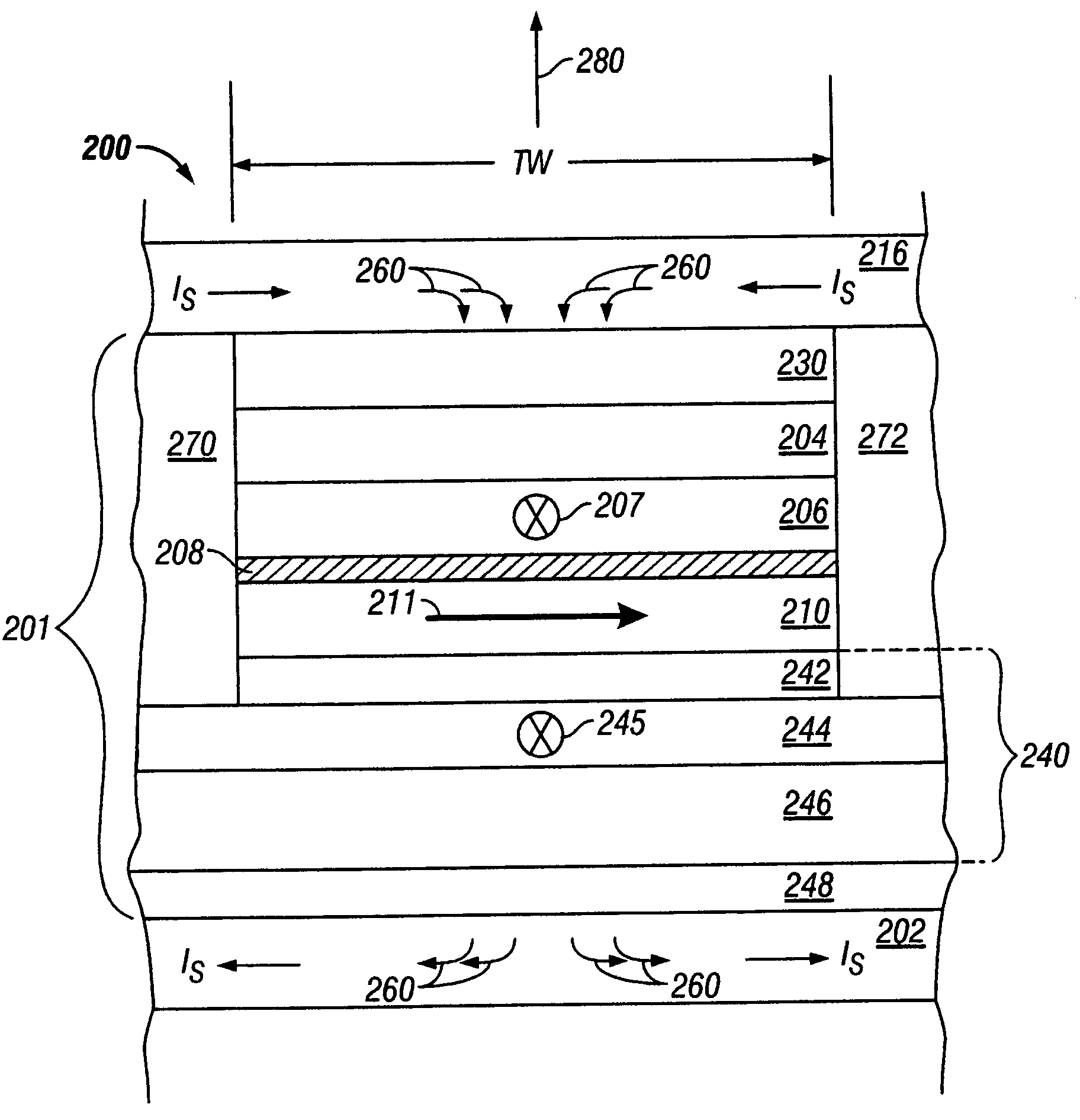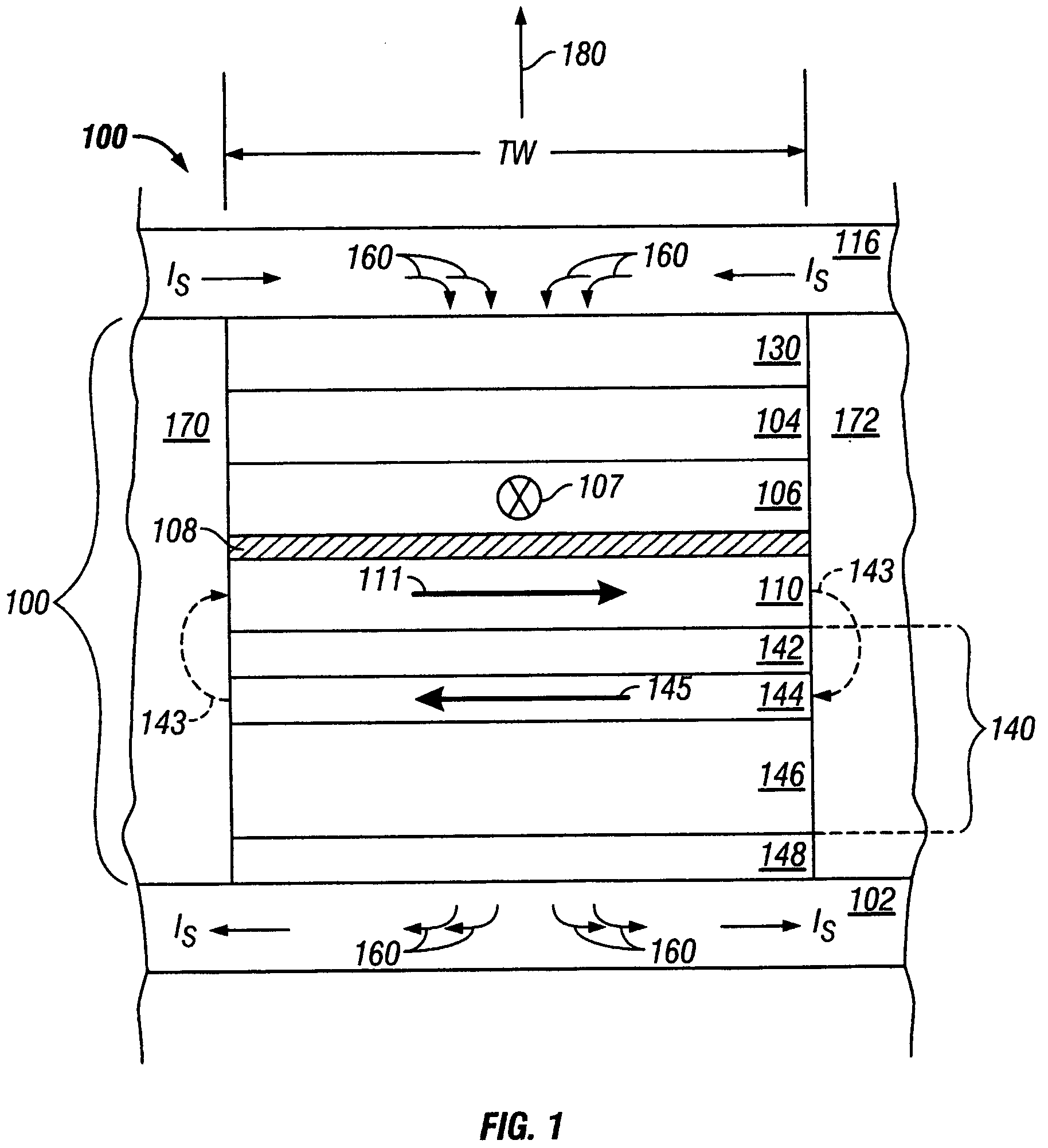Current-perpendicular-to-plane magnetoresistive sensor with free layer stabilized by in-stack orthogonal magnetic coupling
a technology of magnetoresistive sensor and free layer, applied in the field of current perpendicular to the plane (cpp) magnetoresistive sensor, can solve the problems that the structure incorporating it is generally not usable in cpp sensor, and achieve the effect of reducing the parasitic electrical resistance of the sensor
- Summary
- Abstract
- Description
- Claims
- Application Information
AI Technical Summary
Benefits of technology
Problems solved by technology
Method used
Image
Examples
Embodiment Construction
[0018] Prior Art FIG. 1 is a sectional view of a prior art current-perpendicular-to-the-plane (CPP) sensor 100 with in-stack biasing and depicted as a disk drive magnetoresistive read head as it would appear when viewed from the disk. Sensor 100 comprises a stack 101 of layers formed on a substrate 102, which in the case of a read head is the bottom magnetic shield that also serves as the bottom electrical lead. A top magnetic shield 116 on stack 101 also serves as the top electrical lead. The sensor stack 101 is located in the gap between the generally planar surfaces of shields 102, 116. The gap material 170, 172 on the sides of the sensor stack 101 is an insulating material, typically an oxide such as alumina (Al2O3). Sense current Is flows perpendicularly through the layers in the stack 101 between the two leads / shields 116, 102, as shown by arrows 160. The width of the data tracks that can be resolved on the disk is determined by the trackwidth (TW) of the sensor stack 101. The...
PUM
 Login to View More
Login to View More Abstract
Description
Claims
Application Information
 Login to View More
Login to View More - R&D
- Intellectual Property
- Life Sciences
- Materials
- Tech Scout
- Unparalleled Data Quality
- Higher Quality Content
- 60% Fewer Hallucinations
Browse by: Latest US Patents, China's latest patents, Technical Efficacy Thesaurus, Application Domain, Technology Topic, Popular Technical Reports.
© 2025 PatSnap. All rights reserved.Legal|Privacy policy|Modern Slavery Act Transparency Statement|Sitemap|About US| Contact US: help@patsnap.com



